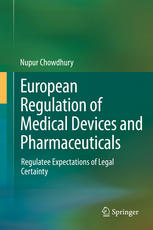

Most ebook files are in PDF format, so you can easily read them using various software such as Foxit Reader or directly on the Google Chrome browser.
Some ebook files are released by publishers in other formats such as .awz, .mobi, .epub, .fb2, etc. You may need to install specific software to read these formats on mobile/PC, such as Calibre.
Please read the tutorial at this link: https://ebookbell.com/faq
We offer FREE conversion to the popular formats you request; however, this may take some time. Therefore, right after payment, please email us, and we will try to provide the service as quickly as possible.
For some exceptional file formats or broken links (if any), please refrain from opening any disputes. Instead, email us first, and we will try to assist within a maximum of 6 hours.
EbookBell Team

0.0
0 reviewsOne of the primary functions of law is to ensure that the legal structure governing all social relations is predictable, coherent, consistent and applicable. Taken together, these characteristics of law are referred to as legal certainty. In traditional approaches to legal certainty, law is regarded as a hierarchical system of rules characterized by stability, clarity, uniformity, calculable enforcement, publicity and predictability. However, the current reality is that national legal systems no longer operate in isolation, but within a multilevel legal order, wherein norms created at both the international and regional level are directly applicable to national legal systems. Also, norm creation is no longer the exclusive prerogative of public officials of the state: private actors have an increasing influence on norm creation as well. Social scientists have referred to this phenomenon of interacting and overlapping competences as multilevel governance. Only recently have legal scholars focused attention on the increasing interconnectedness (and therefore the concomitant loss of primacy of national legal orders) between the global, European and national regulatory spheres through the concept of multilevel regulation.
In this project the author uses multilevel regulation as a term to characterize a regulatory space in which the process of rule making, rule enforcement and rule adjudication (the regulatory lifecycle) is dispersed across more than one administrative or territorial level and amongst several different actors, both public and private. The author draws on the concept of a regulatory space, using it as a framing device to differentiate between specific aspects of policy fields. The relationship between actors in such a space is non-hierarchical and they may be independent of each other. The lack of central ordering of the regulatory lifecycle within this regulatory space is the most important feature of such a space. The implications of multilevel regulation for the notion of legal certainty have attracted limited attention from scholars and the demand for legal certainty in regulatory practice is still a puzzle. The book explores the idea of legal certainty in terms of the perceptions and expectations of regulatees in the context of medical products – specifically, pharmaceuticals and medical devices, which can be differentiated as two regulatory spaces and therefore form two case studies. As an exploratory project, the book necessarily explores new territory in terms of investigating legal certainty first in terms of regulatee perceptions and expectations and second, because it studies it in the context of multilevel regulation.